#Michaela Goade
Explore tagged Tumblr posts
Text






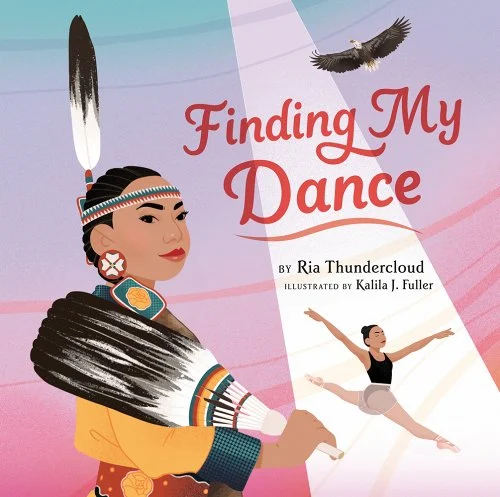
A few picture book picks for Indigenous People's Day
Pictured: What Your Ribbon Skirt Means to Me, Just Like Grandma, Remember, We Are Still Here!, Fry Bread, We Are Water Protectors, Finding My Dance
#Indigenous People's Day#Native American picture books#Indigenous books#Michaela Goade#Carole Lindstrom#Ria Thundercloud#Kalila J Fuller#Joy Harjo#Traci Sorell#Frane Lessac#Kevin Noble Mailard#Juana Martinez-Neal#Kim Rogers#Julie Flett#Alexis Bunten#Nicole Neidhardt
9 notes
·
View notes
Text
Book Notes: Warrior Girl Unearthed
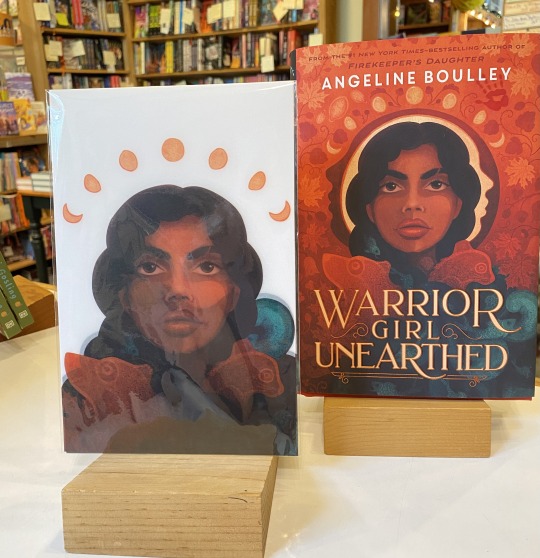
You know how it feels when you read a book that comes out of nowhere and you’re totally blown away? And then that author comes out with their second book and you both really, really want to read it and you’re also afraid it won’t live up to the experience of the first? That was me with Warrior Girl Unearthed by Angeline Boulley. I’d listened to Boulley’s first novel, Firekeeper’s Daughter, and I loved that it was so different from anything I’d read before. The audio book gave me an aural experience of the Anishinaabemowin language that I certainly wouldn’t have had just by reading the book. It was so many things at once — a crime novel, a bittersweet romance, a coming of age story of a young woman with a foot in two very different cultures, trying to reconcile what she can, let go of what she can’t. It was beautiful and heartbreaking and informative without being preachy. So when Warrior Girl Unearthed came out this month, I felt an internal hesitation before opening it up. One night I decided to just read a chapter or two, see what I thought. The next thing I knew I was half way through the book.
You don’t need to have read Firekeeper’s Daughter to enjoy Warrior Girl Unearthed, but it is set ten years later in the same community. Our protagonist, Perry Firekeeper-Birch, is the young cousin of Daunis Fontaine, the central character of Firekeeper’s Daughter. Perry is all set to have a summer of slack in 2014, but an incident with a bear, her car, and a metal fence leaves her in debt to her Aunt Daunis, who signs her up for the last spot in the Kinomaage Summer Internship program. Perry is assigned to work with Cooper Turtle, the supervisor of the tribal museum, and through his mentorship begins to learn about the ancestral remains languishing in universities and museums (despite laws requiring their cataloging and repatriation to the tribes they belonged to). Perry’s sense of justice is kindled and then put to the test as she learns the extent to which artifacts are being withheld from their original tribes. In the meantime, women from the community are going missing and Perry doesn’t want to be next.
This was just as compelling a read as Firekeeper’s Daughter. Once I started, I couldn’t put it down. And, like with Firekeeper’s Daughter, Angeline Boulley is a master at giving the reader a window into Perry’s life as a mixed Native and Black young woman — life within the tribal community of Sault Ste Marie and Sugar Island — and the weighty history that each person carries with them. I felt like I learned alongside Perry about the history of ancestral remains and the efforts of tribes to repatriate the bones and the cultural materials of their people. I felt Perry’s frustration at the way in which people and institutions refuse to respect those bones and artifacts. Boulley includes a list of resources at the end so the reader can dive deeper into the original materials Cooper assigns Perry to read in the book. And the book itself is gorgeous, with a cover designed by Caldecott winner Michaela Goade (We Are Water Protectors). Island Books also has a limited supply of beautiful page overlays from Goade to enjoy as a gift with purchase!
— Lori
#island books#lori robinson#warrior girl unearthed#angeline boulley#firekeeper’s daughter#yareads#michaela goade#booknotes
13 notes
·
View notes
Text
Storytelling unites people across nations

I'd like to give a massive thank you to the residents of West Didsbury in Manchester, whose kind generosity has afforded a number of books for the Wood Street Mission's 'Books Forever Appeal'.
Obtained through the Chorlton Bookshop, among those donated to the 'Books Forever Appeal' includes 'I Sang You Down from the Stars' by award winning children's author Tasha Spillett-Sumner.
'I Sang You Down from the Stars' is a New York Times and Canadian Broadcasting Corporation bestselling love letter, from an Indigenous mother to her new baby.
"As she waits for the arrival of her new baby, a mother-to-be gathers gifts to create a sacred bundle. A white feather, cedar and sage, a stone from the river.
Each addition to the bundle will offer the new baby strength and connection to tradition, family, and community. As they grow together, mother and baby will each have gifts to offer each other."
Tasha Spillett-Sumner and Michaela Goade, two First Nations creators, bring beautiful words and luminous art together, in a resonant celebration of the bond between a mother and child.
First Nations cultures have long passed on knowledge through oral traditions. First Nations storytelling also provides a strong foundation for holistic learning and relationship building.
Donating to the Wood Street Mission’s ’Books Forever Appeal’ couldn’t be easier. You can drop off books for children aged 0-16 years, or even have them delivered to Wood Street Mission, 26 Wood Street, Manchester, M3 3EF, The UK.
#wood street mission#manchester#west didsbury#south manchester#books forever appeal#tasha spillett sumner#native american#canada#first nations#story telling#childrens books#michaela goade#art and culture#reading for fun#books and reading
1 note
·
View note
Text
taking a children's literature class is nice for many reasons, one of which is that I now have an excuse to check out the picture books in my university's library. it's fun to see what's been released since my youngest sibling aged out of the picture book demographic!
#this is a post about Farmhouse by Sophie Blackall#it's so cute!#Berry Song by Michaela Goade is also lovely but it's too large to fit in my backpack so I had to leave it
1 note
·
View note
Text
Banned Native-Authored Children's Books (because of MAGA zealots)
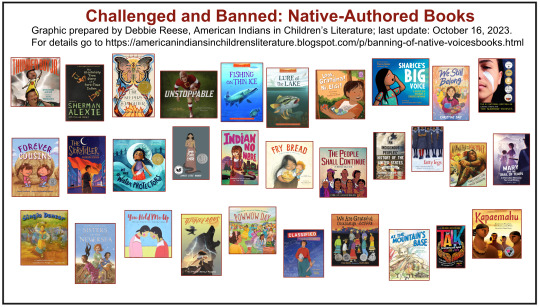
Firekeeper's Daughter written by Angeline Boulley (Sault Ste. Marie Tribe of Chippewa Indians)
Unstoppable: How Jim Thorpe and the Carlisle Indian School Football Team Defeated Army written by Art Coulson (Cherokee); illustrated by Nick Hardcastle (not Native)
Look, Grandma! Ni, Elisi! written by Art Coulson (Cherokee), illustrated by Madelyn Goodnight (Chickasaw)
Fishing on Thin Ice written by Art Coulson (Cherokee)
Lure of the Lake written by Art Coulson (Cherokee)
Sharice's Big Voice: A Native Kid Becomes a Congresswoman by Sharice Davids (Ho-Chunk); illustrated by Joshua Mangeshig Pawis-Steckley (Wasauksing)
We Still Belong by Christine Day (Upper Skagit); cover art by Madelyn Goodnight (Chickasaw)
The Marrow Thieves by Cherie Dimaline (Metis Nation of Ontario)
Forever Cousins by Laurel Goodluck (Mandan, Hidatsa and Tsimshian member); illustrated by Jonathan Nelson (Diné)
The Storyteller by Brandon Hobson (Cherokee)
We Are Water Protectors by Michaela Goade (Turtle Mountain Ojibwe); illustrated by Michaela Goade (Tlingit)
A Snake Falls to Earth by Darcie Little Badger (Lipan Apache)
Indian No More by Charlene Willing McManis (Confederated Tribes of Grande Ronde); cover art by Marlena Myles (Spirit Lake Dakota/Mohegan/Muscogee)
Fry Bread: A Native American Family Story by Kevin Maillard (Seminole); illustrated by Juana Martinez-Neal (not Native)
The People Shall Continue written by Simon Ortiz (Acoma Pueblo), illustrated by Sharol Graves (Absentee Shawnee Tribe of Oklahoma).
An Indigenous Peoples' History of the United States, for Young People by Debbie Reese (Nambé Owingeh) and Jean Mendoza (not Native), adapted from the original edition written by Roxanne Dunbar Ortiz (not Native)
Fatty Legs written by Margaret-Olemaun Pokiak-Fenton (Inuvialiut)
Hiawatha and the Peacemaker written by Robbie Robertson (Mohawk), illustrated by David Shannon (not Native)
Mary and the Trail of Tears by Andrea Rogers (Cherokee)
You Hold Me Up by Monique Gray Smith (Cree), illustrated by Danielle Daniel
Jingle Dancer by Cynthia Leitich Smith (Mvskoke), illustrated by Cornelius Van Wright (not Native) and Ying-Hwa Hu (not Native).
Sisters of the Neversea by Cynthia Leitich Smith (Mvskoke), cover illustration by Floyd Cooper (Mvskoke)
Thunderous written by M. L. Smoker (Assiniboine and Sioux tribes of Montana's Fort Peck Reservation) and Natalie Peeterse (not Native); illustrated by Dale Ray DeForest (Diné)
We Are Grateful written by by Traci Sorell (Cherokee Nation), illustrated by Frane Lessac (not Native)
At the Mountains Base written by Traci Sorell (Cherokee Nation), illustrated by Weshoyot Alvitre (Tongva, Cahuilla, Chumash, Spanish & Scottish)
"The Way of the Anigiduwagi" written by Traci Sorell (Cherokee Nation), illustrated by MaryBeth Timothy (Cherokee) in The Talk: Conversations about Race, Love and Truth edited by Cheryl and Wade Hudson
Classified: The Secret Career of Mary Golda Ross, Cherokee Aerospace Engineer written by Traci Sorell (Cherokee); illustrated by Natasha Donovan (Metis)
Powwow Day written by Traci Sorell (Cherokee); illustrated by Madelyn Goodnight (Chickasaw)
Kapaemahu written by Hinaleimoana Wong-Kalu (Kanaka Maoli), Dean Hamer (not Native), and Joe Wilson (not Native); illustrated by Daniel Sousa
[Full List by Debbie Reese]
#banned books#fuck maga#Native American#Native Hawaiian#Indigenous#books#Debbie Reese#Hinaleimoana Wong-Kalu#Dean Hamer#Joe Wilson#Daniel Sousa#Natasha Donovan#Traci Sorell#MaryBeth Timothy#Cheryl Hudson#Wade Husdon#Weshoyot Alvitre#Frane Lessac#Dale Ray DeForest#Natalie Peeterse#M. L. Smoker#Cynthia Leitich Smith#Floyd Cooper#Robbie Robertson#David Shannon#Monique Gray Smith#Danielle Daniel#Cornelius Van Wright#Ying-Hwa Hu#Andrea Rogers
13 notes
·
View notes
Text
Gf and I planning
(unrelated to project)
Books for future kids:
The Ultimate Book of Animals: Anne-Sophie Baumann
Egyptology: Dugald Steer
Actual Size: Steve Jenkins
Why Are We Afraid?: Fran Pintadera
Different-A Great Thing to Be!: Heather Avis
The Brain Forest: Sandhya Menon
Spaghetti! An Interactive Recipe Book: Lotta Nieminen
Stellaluna: Janell Cannon
The Very Hungry Caterpillar: Eric Carle
The Very Busy Spider: Eric Carle
By the Light of the Halloween Moon: Caroline Stutson
Chicka Chicka Boom Boom: Bill Martin Jr.
If You Give a Mouse a Cookie: Laura Joffe Numeroff
Rumble in the Jungle: Giles Andreae
Commotion in the Ocean: Giles Andreae
What Makes a Baby: Cory Silverberg
I Spy: Walter Wick and Jean Marzollo
The Mitten: Jan Brett
William and The Magic Ring: Laura Robinson
Humongous Fungus (Underground and All Around): Wenjia Tang
Life After Whale (The Amazing Ecosystem of a Whale Fall): Lynn Brunelle
Remember: Joy Harjo and Michaela Goade
3 notes
·
View notes
Text
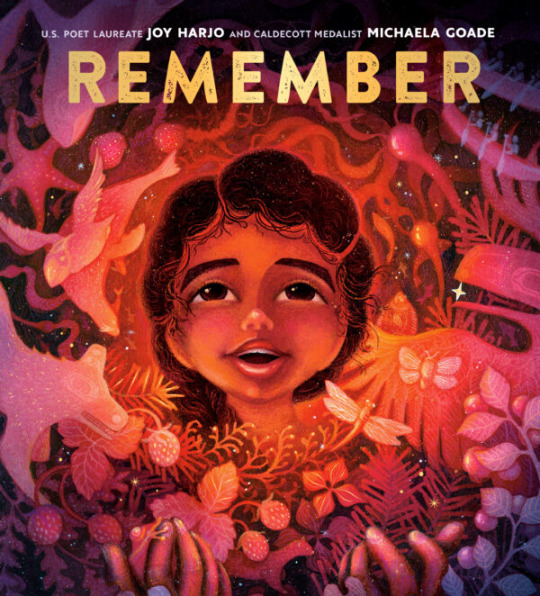
Remember by Joy Harjo, illustrated by Michaela Goade
#illustration#art#book illustration#native american author#joy harjo#picture book#children's literature#native american illustrator#artist#illustrator#kids books#caldecott medal#indigenous kid lit#kid lit#sassafras and moonshine
12 notes
·
View notes
Text
What I’m Reading
BOOKS OF SEPTEMBER Best of Friends by Kamila Shamsie The Dark Queens: The Bloody Rivalry That Forged the Medieval World by Shelley Puhak Be A Good Ancestor by Leona Prince Berry Song by Michaela Goade A Deadly Education by Naomi Novik* ** The Madonna of Excelsior by Zakes Mda The Last Graduate by Naomi Novik ** Shenanigans: All-New Tales of Valdemar edited by Mercedes Lackey (SS) Death is Hard Work by Khaled Khalifa I Never Met a Rattlesnake I Didn’t Like by David Carpenter (NF) The Golden Enclaves by Naomi Novik ** Today Will Be Different by Maria Semple
Graphic Novels: Persona3 Vol.4-11 by Shuji Sogabe & ATLUS I Married My Best Friend to Shut My Parents Up by Naoko Kodama Classmates Vol.4-6 by Asumiko Nakamura
(122 books read / 125 books goal)
currently reading: Read, Listen, Tell: Indigenous Stories From Turtle Island edited by McCall/Reder/Gaertner/Hill (NF/SS) Elementary: All-New Tales of the Elemental Masters edited by Mercedes Lackey (SS) An Indian Among los Indígenas: A Native Travel Memoir by Ursula Pike (NF) How to Fake It in Hollywood by Ava Wilder Other Terrors: An Inclusive Anthology edited by Vince A. Liaguno & Rena Mason (SS)
* - re-read // ** - 4+ star-rating (recommended) GN - graphic novel // NF - non-fiction // P - poetry SS - short story collection // AB - audiobook
TBR: You’re Not Supposed to Die Tonight by Kalynn Bayron One Last Stop by Casey McQuiston Dunce by Mary Ruefle (P) Lore Olympus Vol.1 by Rachel Smythe (GN) Sorry for My Familiar Vol.4-6 by Tekka Yagurabe (GN)
WHAT ARE YOU READING? :D
Find me on: GOODREADS | THE STORYGRAPH
#books#bookworm#reading#TBR#what are you reading#my books#2023#september#october#reading year 2023#books of 2023#novels#graphic novels#non fiction#history#picture books#short stories#romance#fantasy#YA#manga
2 notes
·
View notes
Text
Remember by Joy Harjo, illustrated by Michaela Goade
Remember by Joy Harjo, illustrated by Michaela Goade. Random House Kids, 2023. 9780593484845 Rating: 1-5 (5 is an excellent or a Starred review) 5 Format: Hardcover picture book What did you like about the book? Taken from a poem by Joy Harjo, this book’s text and illustrations are equally beautiful. Joy Harjo’s text reminds the reader to remember the joys gathered from the world around us –…

View On WordPress
2 notes
·
View notes
Text

Title: Remember
Author: Joy Harjo
Illustrator: Michaela Goade
Publisher: Random House Studio
Year Published: 2023
1 note
·
View note
Photo
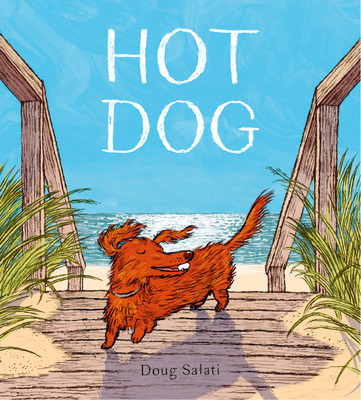

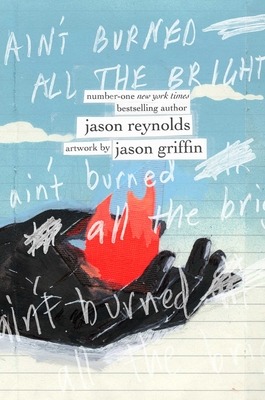


Congratulations to the 2023 Caldecott Medal winner and Honorees!
#Caldecott Award#Hot Dog#Berry Song#Ain't Burned All the Bright#Knight Owl#Choosing Brave#Doug Salati#Michaela Goade#Jason Reynolds#Jason Griffin#Christopher Denise#Angela Joy#Janelle Washington#awards
27 notes
·
View notes
Text



Carole Lindstrom, We Are the Water Protectors Illus. Michaela Goade
0 notes
Text
We Are Water Protectors (Literature) (1/3)

We Are Water Protectors (2020) - Carole Lindstrom and Michaela Goade
It is a short story where the protagonist belongs to what appears to be an ancient native tribe that protects and maintains water like something magical
It is really interesting how a story aimed at children can be too deep while representing a clear topic, which is the invasion and contamination of water. Throughout history we become aware of pollution pipes, as an external threat, something that should never have appeared, and that threatens all life it encounters.
The authors represent water as something that has a soul and that can heal all the ills in the world. The imminent danger for the world is a "Black Snake". This is how they represent it, but in reality they are the tubes that transport chemicals that poison and contaminate the water.
They show us the importance of water and that without it the world is little by little disappearing. The book is focused on the problem of human intervention contaminating protected places: lagoons, rivers, etc.
In summary, "We Are Water Protectors" is a children's story that manages to perfectly represent the importance of water, its place in nature, and how its pollution can affect millions of animals and plants.


0 notes
Text
We Are Water Protectors

We Are Water Protectors is the winner of the 2021 Caldecott Medal and is a best seller. The target audience for this book is children aged 3 to 7. This book was written by Carole Lindstrom and Illustrated by Michaela Goade and was created to bring attention to the climate crisis and the efforts of the Indigenous communities to protect the earth, particularly the Earth's water. The book is about a young Native American girl who along with her tribe is determined to protect the water and land from a black snake that will essentially poison it. We Are Water Protectors also demonstrates peaceful protesting and the importance of activism. The book gives representation to Indigenous cultures and discusses the importance standing up for what you believe in.
I chose to review this book because climate change and activism can be difficult topics to discuss with children even though it's important. Often times what is shown on tv or on the news is scary or confusing and not the best way to introduce a topic. However, this book is educational without being overwhelming and not only educates children about protecting the environment but it is also a great way to educate children about Native cultures.
For this review I will be evaluating: Illustrations, Accuracy, Style and Language.
Illustrations: The illustrations in this book compliment the topic of the story and reinforce the written text. The story begins with an elder telling native American folklore about the water and mother earth. The illustrator uses different shades of blue to represent the water that is being protected, and hues of purple and white to represent the sacred land. While these illustrations are well executed and made me feel like I was also on the sacred land, the most significant illustration for me was the last page where the Indigenous community is protesting. The attention to detail made me feel like I was protesting alongside them.
Accuracy: This story was written in response to the Dakota Access Pipeline (DAPL) which violated the Fort Laramie Treaty, disturbing the reservation lands surrounding the pipeline. According to Native Knowledge, the Standing Rock Sioux Tribe advocated that the DAPL would threaten the survival of the Tribe and destroy valuable resources (Native Knowledge, 2018). The author and illustrator did a great job of depicting this real-life event in a story book for kids without it being too overwhelming. While the DAPL is not explicitly stated in the story, it is seen in the illustrations at the end of the story as protestors hold signs that say “No DAPL” and “Stand with Standing Rock”. The author and illustrator also included information about the dangers of oil pipelines and Standing Rock at the end of the story in the author’s note which gives parents the option to have that discussion with their children. The story did well in accurately representing the fight against the DAPL.
Style and Language: As mentioned, climate change and activism can be heavy topics. Lindstrom uses a direct and lyrical style to emphasize the importance of protecting the water and the earth. She uses metaphors such as “Tears like waterfalls” and uses personification by describing the water as being alive. Using figurative language, the author allows the reader to make an emotional connection with the message that is being told in the story in an engaging way..
Describing an oil pipeline and its negative impacts might be difficult to do with young readers but by using vocabulary that they may be familiar with makes it simpler. For example, using the black snake to represent something harmful might be easier for them to make a connection with the dangers of a pipeline. Using words like “poison” and “venom” along with the illustrations is a powerful way to describe something dangerous of having something like a snake in sacred water. Additionally, the author uses Indigenous vocabulary to refer to the girl’s grandmother. She also speaks of spirit, ancestors, and sacredness which are also impactful ways to expand the readers language and curiosity.
References:
Lindstrom, C. (2020). We Are Water Protectors (M.Goade, Illus.). Roaring Book Press.
Standing Rock Sioux and Dakota Access Pipeline: Teacher resource. Standing Rock Sioux and Dakota Access Pipeline | Teacher Resource. (n.d.). https://americanindian.si.edu/nk360/plains-treaties/dapl
0 notes
Text
Anpetu Was’te
TUPE Students
Here is your cultural article for today.
How many indigenous authors of children and youth books do you read?
Can you list them? Which books will you read in 2023?
Mitakuye Oyasin
Kathy Willcuts - Lakota
TUPE Cultural Educator
Julie DePhilippis-Aleut
TUPE Youth Coordinator
0 notes
Photo



Caldecott-winning illustrator Michaela Goade, who has Tlingit heritage, worked with Cree author Tasha Spillett-Sumnet on her new book I Sang You Down from the Stars, which blends both traditions in a gorgeous story about a woman preparing for motherhood.
Before her child is born, the woman gathers sacred objects to present to the baby. “But hen upon the baby's arrival, she learns that the baby is, in essence, its own sacred object, its own sacred bundle itself,” Goade tells NPR’s Lulu Garcia-Navarro. “Because within this child are the hopes and dreams of culture and of carrying on traditions and connection to everyone who's come before you.”
Hear that conversation here!
-- Petra
140 notes
·
View notes